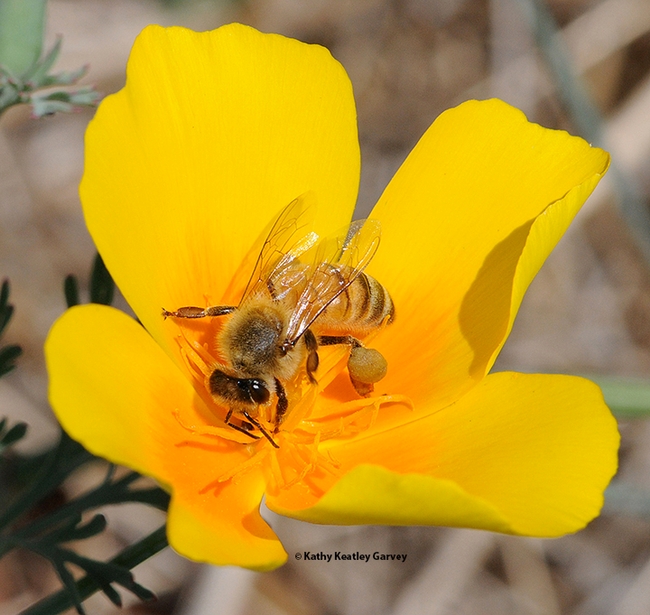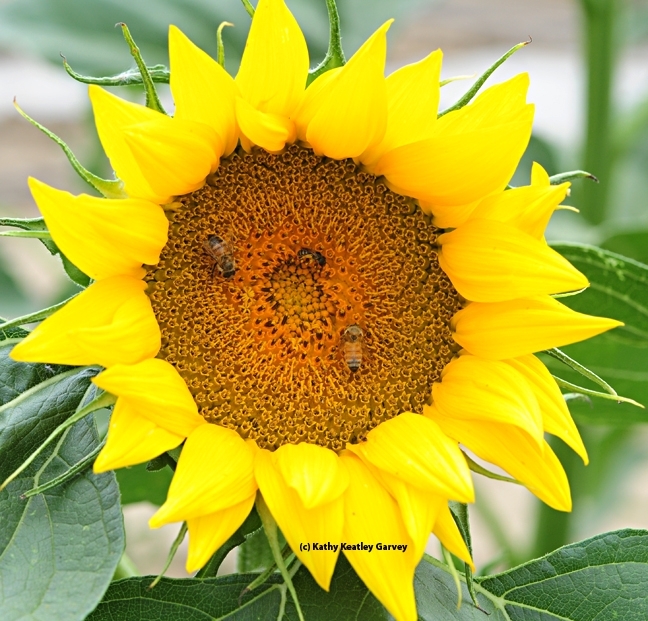
Those who live in the Sacramento area (including Davis) and the East Bay, are invited to register for the citizen scientist project sponsored by UC Davis doctoral alumnus Billy Krimmel, ecologist and founder of Miridae Living Labs, West Sacramento.
The goal: to see the dynamics of native plant seed dispersal in human-dominated landscapes. "Sign-ups are open until mid-January or until we run out of seed packets!" said Ashley Hong, Seed Pile Project intern.
Miridae has extended the time frame from December to mid-January to drop the seeds.
Miridae is working with pollination ecologist Neal Williams, professor, and urban landscape entomologist Emily Meineke, assistant professor. Also on the team is assistant professor Haven Kiers of the Department of Human Ecology, who specializes in landscape architecture and environmental design.
Here's what you do:
- You sign up here
- You get 3 free packets of native wildflower seeds
- You drop them somewhere in your neighborhood or commute
- You DO NOT water or maintain them
- You monitor them once a month until May using the Miridae app and "tell us what you see"
"We encourage folks of all ages to participate, and we provide resources such as seedling identification guides to help you identify the species in your seed piles," Krimmel told us. "This is a great project for school classes and scout troops in addition to individuals."
It works like this: "Community participants to drop small piles of local, California native seeds in urban areas where they live or work, then monitor the results through repeated observations," as Krimmel explained. "Using data from participants on the conditions under which certain species of these locally adapted seeds spread, survive, or die, we can gain a better understanding of which native species to incorporate into the built environment and where to put them for the greatest ecological benefit and resilience."
What's in the wildflower mix?
Sacramento Region seed mix:
- Eschscholzia californica, California poppy
- Phacelia imbricata, Imbricate phacelia
- Clarkia unguiculata, Elegant clarkia
- Lupinus microcarpus var. densiflorus, Dense-flowered lupine
- Madia elegans, Common madia
- Helianthus annuus, Sunflower
- Nemophila menziesii, Baby blue eyes
East Bay Region seed mix:
- Eschscholzia californica, California poppy
- Phacelia californica, Rock phacelia
- Hemizonia congesta ssp. luzulifolia, Hayfield tarweed
- Clarkia purpurea, Purple clarkia
- Lupinus bicolor, Miniature lupine
- Nemophila menziesii, Baby blue eyes
Happy seed-piling!
Attached Images:

A honey bee foraging on a California golden poppy, the state flower. The Seed Pile Project includes golden poppy seeds. (Photo by Kathy Keatley Garvey)

The sunflower, Helianthus annuus, is native to the Americas. Sunflower seeds are part of the Seed Pile Project for the Sacramento region, but not the East Bay Region. This image, taken in a commercial field in Yolo County in 2013, shows a male sterile cultivated variety, according to Yolo County farm advisor Rachael Long. "They are typically multi-branched with multiple flowers," she said. (Photo by Kathy Keatley Garvey)